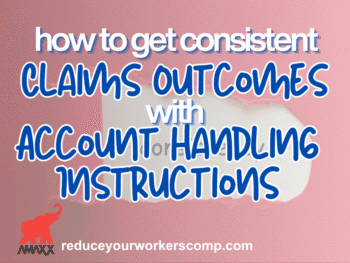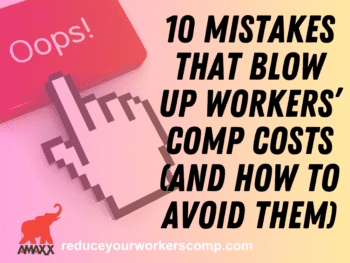We all love stories. Stories are entertaining, interesting and informative. So, I am going to tell you a story – all about how to reduce your workers’ compensations from 30% to 60%. Yes, that’s right. It’s been proven over and over and over . . .
A well designed workers‘ compensation programs can cut your costs 305 to 60%. Too often however, those in charge rush to buy the latest new product before they understand the problem. Make sure you understand why your costs are high, then develop a comprehensive solution, A PLAN! If you want to reduce your losses quickly, don’t take a ‘dart-board’ approach. To reduce your losses, concentrate sufficient resources in the following areas.
The Data Tells a Story – Review Your Data
The first step is understanding how bad your workers’ compensation losses really are, if in fact they are bad. We know 80% of the cost of WC is losses and 20% is from premium and administrative costs. You must know your loss costs and if you have a problem.
One large entertainment company I worked with recently thought workers’ compensation costs were too high. When we compared their costs to national averages we found their costs actually were half the national average. The company failed to develop benchmarks to take into consideration an increase in the number of employees following a recent acquisition.
I recommend analyzing data to equalize the number of employees. Cost Per Full-time (Equivalent) Employee (FTE) offers a comparison of your company’s divisions regardless of how many full vs. part-time employees each has. The cost as percentage of payroll and cost as percentage of revenue allow you to compare your company to industry averages and establish baseline averages to use for future determination of progress. The return-to-work ratio tells what percentage of employees return to work quickly after the accident. Ideally, 90% of injured employees should return to work within the first four days after an accident. This is perhaps the most important measurement because it is indicative of the length of absence in each claim. (workersxzcompxzkit)
After reviewing data to determine you starting benchmark, select one or two measurements to convey success and progress to upper management and to employees. No one wants to receive 200 pages of data so make it concise – one page is preferable – with corporate then each business unit’s numbers shown individually. The senior management might prefer the Cost per FTE while the employees may relate better to number of lost workdays in their department. When employees understand workers’ comp costs are consuming their potential raises, they will cooperate.
Author: Rebecca Shafer, J.D. Rebecca helps companies reduce workers’ comp costs 20-50%. She has over 20 years of experience and an excellent track record of success. Contact her at RShafer@ReduceYourWorkersComp.com or 860-786-8286
WC Best Practices Quick Check: http://www.workerscompkit.com/intro/
Workers’ Comp Kit Books & Guides: http://www.reduceyourworkerscomp.com/workers-comp-books-manuals.php
Follow Us On Twitter: www.twitter.com/WorkersCompKit
Do not use this information without independent verification.
All state laws vary.
©2008 Amaxx Risk Solutions, Inc. All rights reserved under International Copyright Law. If you would like permission to reprint this material, contact Info@WorkersCompKit.com













